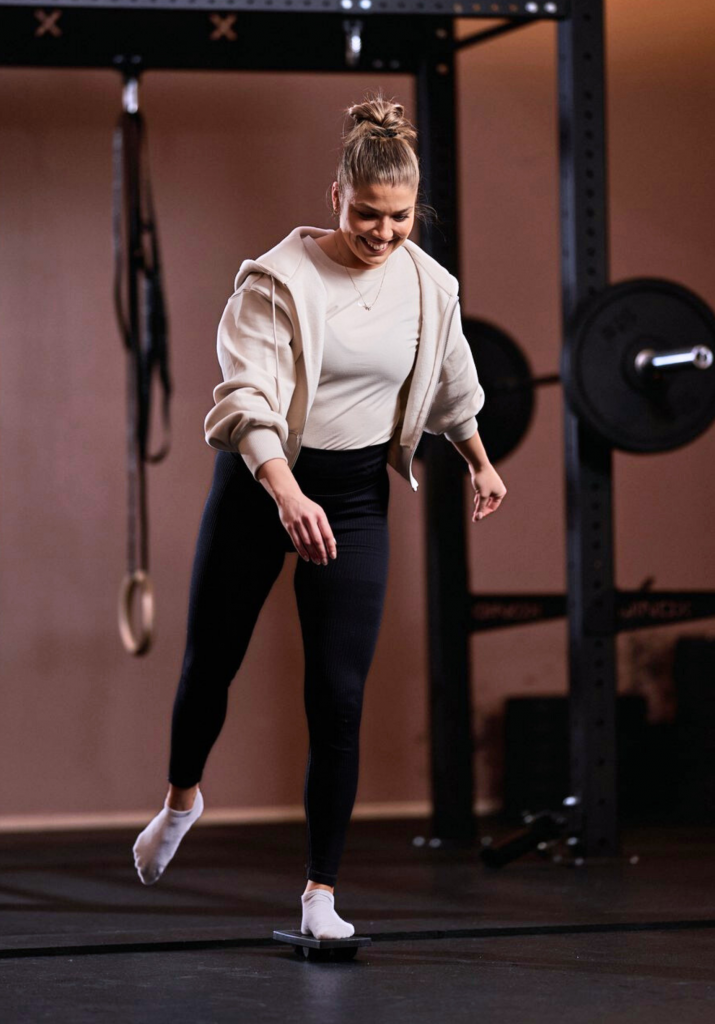Explosive power – the ability to generate maximum force in minimum time – is a crucial element of athletic performance across virtually all sports and activities. Whether you’re sprinting, jumping, changing direction, or simply reaching for something on a high shelf, your body’s capacity to produce power quickly directly impacts performance and safety. Developing this power through functional training doesn’t just benefit elite athletes; it enhances everyday movements and helps prevent injuries for people of all fitness levels. Let’s explore how functional training can build explosive power safely and effectively, with special attention to balancing exercises that enhance your body’s power-generating capabilities.
Understanding explosive power and why it matters for athletic performance
Explosive power represents the perfect marriage between strength and speed. It’s your body’s ability to recruit muscle fibers rapidly and generate maximum force in the shortest possible time. This type of power is essential not just for athletes but for everyday functional movements that require quick bursts of energy.
At the physiological level, explosive power primarily comes from fast-twitch muscle fibers (type II fibers). Unlike their slow-twitch counterparts, these fibers contract quickly and powerfully but fatigue faster. They’re responsible for high-intensity, short-duration activities like jumping, throwing, and sprinting.
The benefits of developing explosive power extend beyond improving athletic performance:
- Enhanced reaction time – Your body becomes more efficient at responding quickly to stimuli
- Improved neuromuscular coordination – Better communication between your brain and muscles
- Reduced injury risk – Muscles that can absorb and produce force quickly help protect joints
- Greater functional capacity – Everyday tasks become easier and more efficient
Research has consistently shown that explosive power training significantly impacts both sports performance and overall health. By training your body to generate force rapidly, you improve the rate of force development (RFD) – a key metric for explosive movements in both sports and daily life.
Essential functional training principles for developing explosive power
Building explosive power requires a thoughtful approach that balances intensity, technique, and progressive overload. Here are the foundational principles to guide your training:
- Progressive overload – Gradually increase the demands on your neuromuscular system by manipulating variables like weight, height, distance, or complexity
- Specificity – Train movements that directly translate to your sport or activity goals
- Proper technique – Prioritise quality over quantity; explosive movements performed with poor form increase injury risk
- Adequate recovery – Allow sufficient rest between sets and workouts; power development requires a refreshed nervous system
Before diving into explosive training, ensure you’ve built a solid foundation of core stability, balance, and basic strength. These elements create the platform from which power can be safely generated. If your foundation is unstable, adding explosive movements increases injury risk substantially.
The most effective power training programmes incorporate multi-joint movements that engage the entire kinetic chain rather than isolating individual muscles. This approach mirrors real-world movement patterns and maximises functional carryover to sports and daily activities.
5 fundamental plyometric exercises to boost explosive strength
Plyometric training – exercises that use the stretch-shortening cycle to generate force rapidly – forms the cornerstone of explosive power development. Here are five foundational plyometric exercises to incorporate into your training:
1. Box jumps
Progression: Begin with a lower box (30-45cm) and gradually increase height as technique and confidence improve.
Technique: Stand facing a wall, hold a medicine ball at chest level, then explosively push the ball toward the wall, catching it on the rebound.
Benefit: Builds upper body power and core stability.
3. Jump squats
Progression: Begin with bodyweight, then add light dumbbells or a weighted vest as strength improves.
Technique: From a partial squat position, jump laterally from one foot to the other, covering maximum distance.
Benefit: Builds lateral power and stability critical for multidirectional sports.
5. Plyo push-ups
Progression: Begin with hands on an elevated surface, progress to floor, then add claps or other variations.
Benefit: Develops upper body pushing power and core stabilisation.
How to incorporate balance training for enhanced power development
Balance training is often overlooked in power development, yet it plays a crucial role in maximising force production. When your body is stable, more energy transfers directly into generating power rather than compensating for instability.
The connection between balance and power is simple: power requires a stable base from which to generate force. Tools like the Gymba Balance Board MINI create controlled instability that challenges your neuromuscular system to adapt and improve coordination.
Here are specific ways to incorporate balance training for power development:
- Single-leg balance exercises that progress to dynamic movements
- Performing upper body exercises while standing on a balance tool
- Adding balance challenges to recovery periods between power exercises
The Gymba Balance Board MINI is particularly effective for balance training because it creates multidirectional instability. Standing on it with one foot activates the small stabilising muscles in your ankles and feet that are crucial for power transfer through the kinetic chain. These small muscles often go neglected in traditional training but play a vital role in power expression.
Try this simple progression: master single-leg balance on the board, then progress to small hops and eventually single-leg jumps landing on the board. This trains your body to generate and absorb force while maintaining stability – exactly what’s needed for explosive sports movements.
Recovery techniques to optimize explosive training results
Explosive training places significant demands on both your muscular and nervous systems. Without proper recovery, performance plateaus and injury risk increases. Incorporate these recovery methods to maximise your training results:
- Nutrition timing – Consume a mix of protein and carbohydrates within 30 minutes after training to support muscle repair and glycogen replenishment
- Adequate sleep – Aim for 7-9 hours of quality sleep; this is when most recovery processes occur
- Active recovery – Light movement (walking, swimming, cycling) increases blood flow without additional stress
- Myofascial release – Self-massage techniques help relieve muscle tension and improve tissue quality
Foot recovery is particularly important yet often neglected. Your feet absorb tremendous forces during explosive movements and need specific attention. The Gymba Balance Board MINI offers a unique advantage here – turn it upside down to access the fixed massage balls, which provide targeted myofascial release for your feet.
Simply place your foot on the textured massage surface and apply gentle pressure, moving your foot to target different areas. This stimulates circulation, relieves tension in the plantar fascia, and helps reduce discomfort after intense training sessions.
Combine regular balance training with these recovery techniques to create a comprehensive approach to explosive power development. By building stability, challenging your neuromuscular system, and prioritising recovery, you’ll develop functional power that translates to improved performance in sports and daily life.

